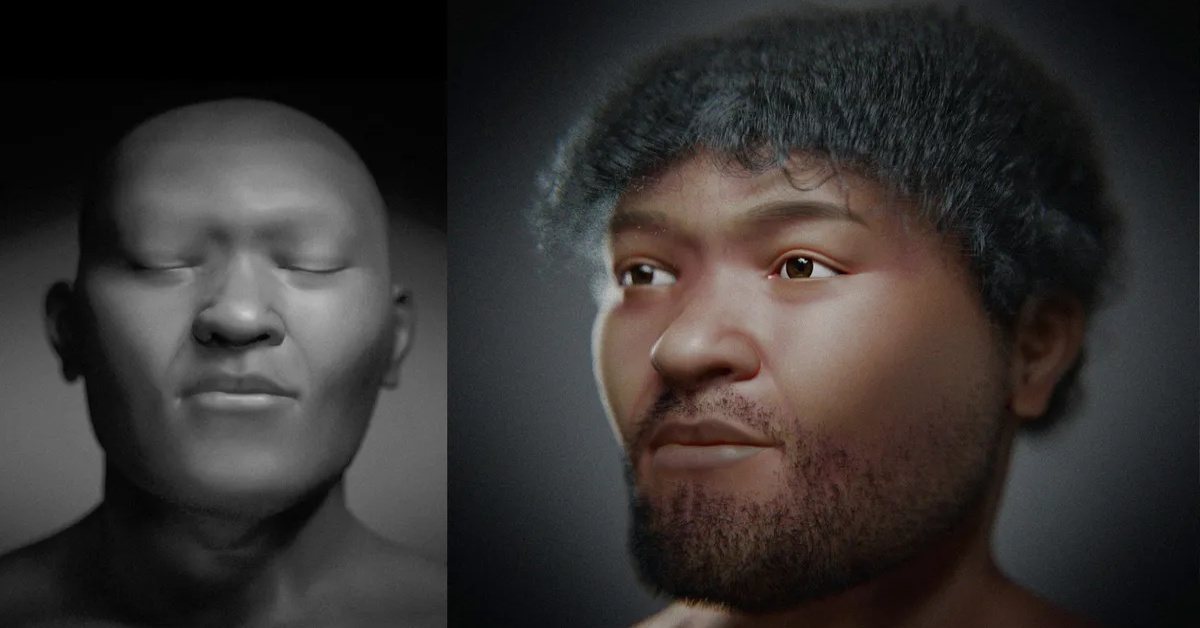Face to face with a man who lived in the Nile Valley around 30,000 years ago.

In 1980, an almost complete skeleton, with the exception of the distal parts of the feet and hands, was found at the Nazlet Khater 2 (NK2) site in the Nile Valley, Egypt. The remains, which were later determined to be around 33,000 years old, belonged to a young man of African ancestry, estimated to be in his late teens or twenties, who was around 165 centimeters (5 foot 4 inches) tall. A recent project has created facial reconstructions of the man, providing a deeply personal insight into prehistoric Egypt, IFLScience reported.
The reconstructions were created by archaeologist Moacir Elias Santos and 3D designer Cícero Moraes, who note in their paper published in OrtogOnline that the skull demonstrates modern characteristics, implying that the individual may have possessed cognitive capabilities similar to contemporary humans. Nonetheless, the remains exhibit some “archaic” traits, particularly a larger jaw in comparison to present-day Homo sapiens.
Photogrammetry imaging was employed to capture the skull’s shape, and an assortment of scientific methods was utilized to reconstruct the missing components of the remains. Once the complete skull model was created, the researchers had to determine the placement and structure of the soft tissue on the skull.


Facial reconstruction from a single skull is not a precise discipline, and hence, it requires some degree of artistic interpretation. This is because the skull’s form can only offer a restricted understanding of how soft tissue, like muscles and fat, would appear on a person’s face.
Therefore, the pair produced two images, one with a more scientific and objective approach and the other with a more artistic and subjective flair. While the “scientific” image is a basic bust, the “artistic” rendition includes hair, a light beard, and expressive eyes.
“Although it contains speculative elements about the individual’s appearance, as it is a work that will be presented to the general public, it provides the necessary elements for a complete humanization, very difficult to achieve only with exposure of the skull and deficient in the objective image in grayscale with eyes closed,” the researchers note in their paper.

The individual so depicted had a way of life based on hunting and gathering, relying solely on stone tools and his mental capabilities. It wasn’t until roughly 25,000 years after his existence, around 6000 BCE, that permanent settlements emerged throughout Egypt, giving way to the emergence of an ancient civilization of exceptional grandeur, renowned for its intricate culture and remarkable architectural accomplishments.
